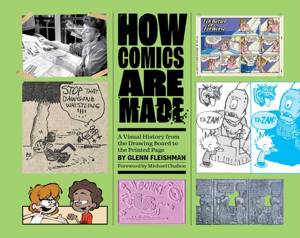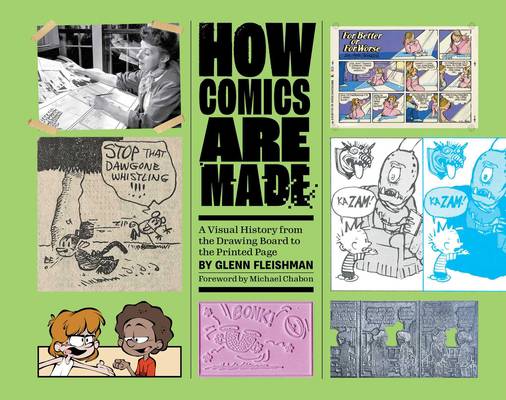
- Retrait gratuit dans votre magasin Club
- 7.000.000 titres dans notre catalogue
- Payer en toute sécurité
- Toujours un magasin près de chez vous
- Retrait gratuit dans votre magasin Club
- 7.000.0000 titres dans notre catalogue
- Payer en toute sécurité
- Toujours un magasin près de chez vous
How Comics Are Made
A Visual History from the Drawing Board to the Printed Page
Glenn Fleishman
Livre relié | Anglais
40,00 €
+ 80 points
Description
"No one, before now, has written a history of the comic strip as a technological artifact--not, at least, in such depth, and on such a sound foundation of research." - Michael Chabon, author, The Amazing Adventures of Kavalier & Clay If you love comics, you'll love this visual history of comic strips featuring all of the methods, techniques, and wizardry that made the funny pages such an important staple of American life. Featuring interviews with dozens of the century's most famous cartoonists and hundreds of rare archival images. How Comics Are Made covers the entire history of newspaper comics from a unique angle--how they were made and printed. This book combines years of research and dozens of interviews with cartoonists, historians, and production people to tell the story of how a comic starts with an artist's hand and makes it way through transformations into print and onto a digital screen. You'll see reproductions of art and artifacts that have never appeared in print anywhere, and some historic comics will appear for the first time ever in any medium in this book. And you'll find out about metal etching, Dragon's Blood (a real thing), flong (also a real thing), and the massively, almost impossibly complicated path that original artwork took to get onto newsprint in the days of metal relief printing. The book is divided by time and transitions, from the start of consistently appearing daily and weekly comics in newspapers:
Each section features interviews with artists, reproductions of original cartoon art, printing and coloring artifacts, and the way cartoons appeared in print--or on screen.
- The Early Days: From the Yellow Kid in the 1890s to the 1910s
- Syndication in Metal: When it became affordable to make hundreds or thousands of copies of daily strips to send around the country (or world), from the 1910s to 1970s
- Flatland: Newspapers' switch from relief to flat printing and the shift to purely photographic transformations from the 1950s to the 1980s
- Pixel Perfect: The transition from photographic to digital, from scanning to digital creation, from the 1970s to 2000s and through the present day
- Webcomics and Beyond: Look, ma, no ink! Digital comics read online and sometimes put on press to make books
Each section features interviews with artists, reproductions of original cartoon art, printing and coloring artifacts, and the way cartoons appeared in print--or on screen.
Spécifications
Parties prenantes
- Auteur(s) :
- Editeur:
Contenu
- Nombre de pages :
- 288
- Langue:
- Anglais
Caractéristiques
- EAN:
- 9781524898779
- Date de parution :
- 03-06-25
- Format:
- Livre relié
- Format numérique:
- Genaaid
- Dimensions :
- 274 mm x 211 mm
- Poids :
- 1270 g

Les avis
Nous publions uniquement les avis qui respectent les conditions requises. Consultez nos conditions pour les avis.






